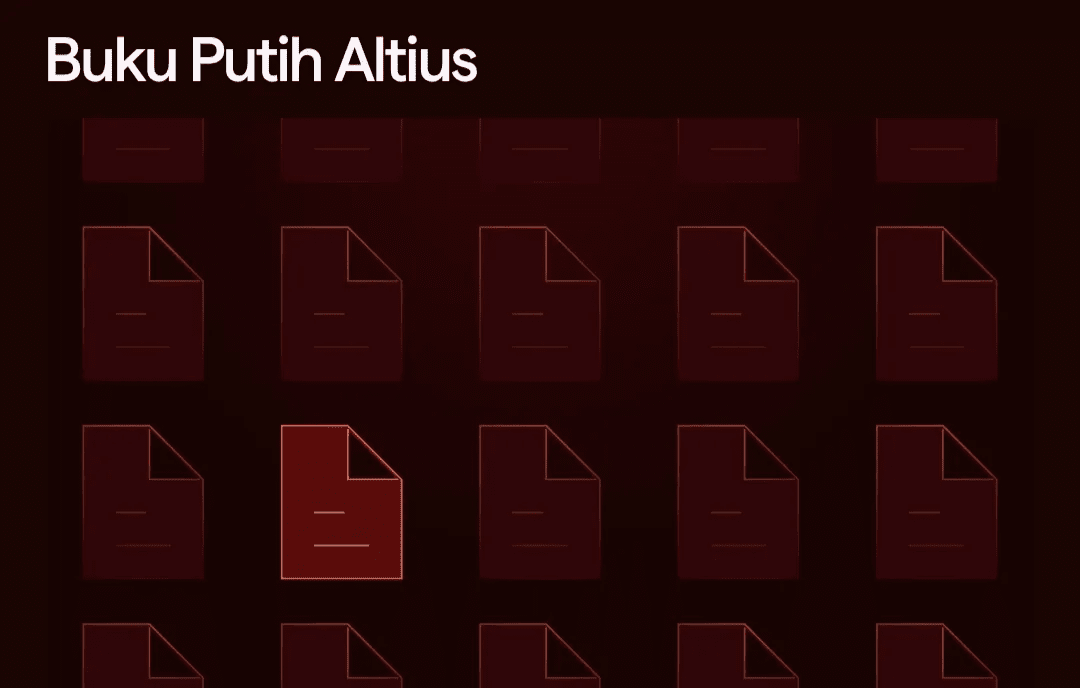
1. Abstract
Altius introduces a VM-agnostic Execution Framework that optimizes blockchain execution through a modular design. Its three-module architecture enables high-performance execution, multi-chain interoperability, and better scalability.
Altius Stack separates the blockchain execution layer from the single binary implementation and network design, allowing for seamless integration with all Layer 1, Layer 2, and application-specific chains for instant performance upgrades and better interoperability. This architecture aims to achieve Web2 parity for future on-chain use cases, ensuring onboarded chains are future-proof for performance.
2. Introduction
Problem Statement
Current blockchain systems face significant challenges, including network congestion, high transaction costs, and limited scalability for opinionated use cases — even as public block space continues to grow. These limitations stem from monolithic execution layers and inadequate interoperability, putting networks at risk of obsolescence without scalability solutions like parallel execution.
While parallel processing is a well-researched and widely available solution for scaling, many networks lack the resources to develop their own systems. Altius offers a ready-made modular execution layer to bridge this gap, allowing networks to scale efficiently and make their infrastructure future-proof without additional development work.
Vision
Altius's mission is to enhance blockchain scalability and interoperability at the execution layer, enabling applications and ecosystems to reach their full potential. Altius aims to empower multi-chain ecosystems with a shared execution infrastructure focused on:
Efficient scaling solutions with continuous improvements that maintain optimal performance
Cross-chain interoperability
Developer incentives to build applications designed for multi-threaded parallel processing environments
Scope
This paper discusses the architecture, implementation, and development roadmap of Altius.
3. Technical Architecture
Altius's technical architecture uses three core pillars to optimize blockchain execution:
Scalable Parallel Storage: Enables concurrent operations and efficient state updates across nodes.
Instruction-Level Parallelism: Using Static Single Assignment (SSA) to identify and independently re-execute conflicting instructions.
Application Code Assessor: Rewards developers for creating optimized smart contracts in execution environments.
Together, these pillars enhance scalability, efficiency, and interoperability in blockchain execution.
Parallel Scalable Storage
State management is critical for blockchain performance, as each transaction updates the system state. Traditional systems using Merkle-Patricia face latency and I/O bottlenecks that worsen with increasing blockchain activity. Parallel Scalable Storage offers a new approach to state data management.
Altius's Scalable Parallel Storage solution employs sharded state management, distributed temporary storage, and advanced data structures to achieve high performance with low latency. This article discusses its key features and benefits.
Core Principles of Parallel Scalable Storage
The system divides state data into independently managed shards across distributed nodes, enabling parallel operations. Shards are distributed according to key prefixes for balanced workloads. Scalable State Merkle Trie (SSMT) implements this by assigning specific prefix ranges (e.g., 0x00–0x10) to different nodes.
To minimize latency, distributed caches store frequently accessed data in memory, utilizing prefetching and historical patterns. SSMT optimizes state management through efficient query handling and workload balancing algorithms, preventing performance bottlenecks.
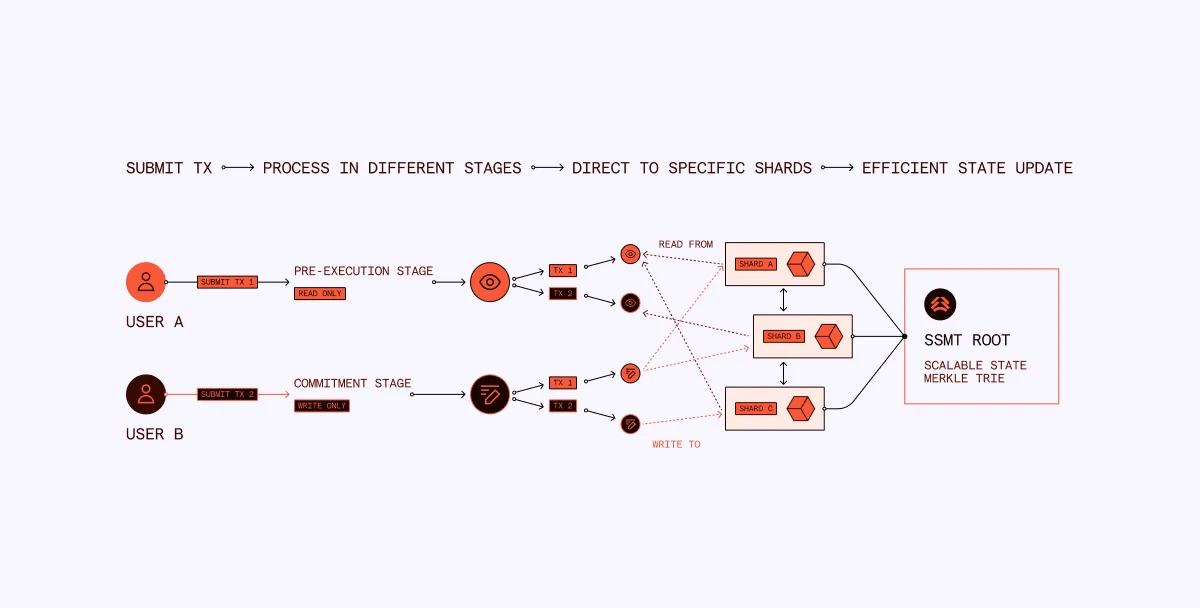
Architectural Innovations
Parallel Scalable Storage is equipped with innovative dynamic load balancing for even shard distribution, concurrency-optimized algorithms for parallel processing, memory-centric designs for faster access, and fault tolerance for reliability.
SSMT Evaluation and Benchmarks
We evaluate SSMT's performance using Ethereum mainnet datasets, comparing Transactions-Per-Second (TPS) and Gas-Per-Second (GPS) metrics from the Altius execution engine with Deterministic OCC and SSMT. Testing on a 32-core 128GB server with high-performance 100GB SSD showed a 50% reduction in I/O overhead and a 1.2–1.5x performance improvement for large datasets.
SSMT integration increases average GPS to ~657M, achieving a 1.8x increase compared to Deterministic OCC alone and 30x compared to regular GPS on Ethereum mainnet.
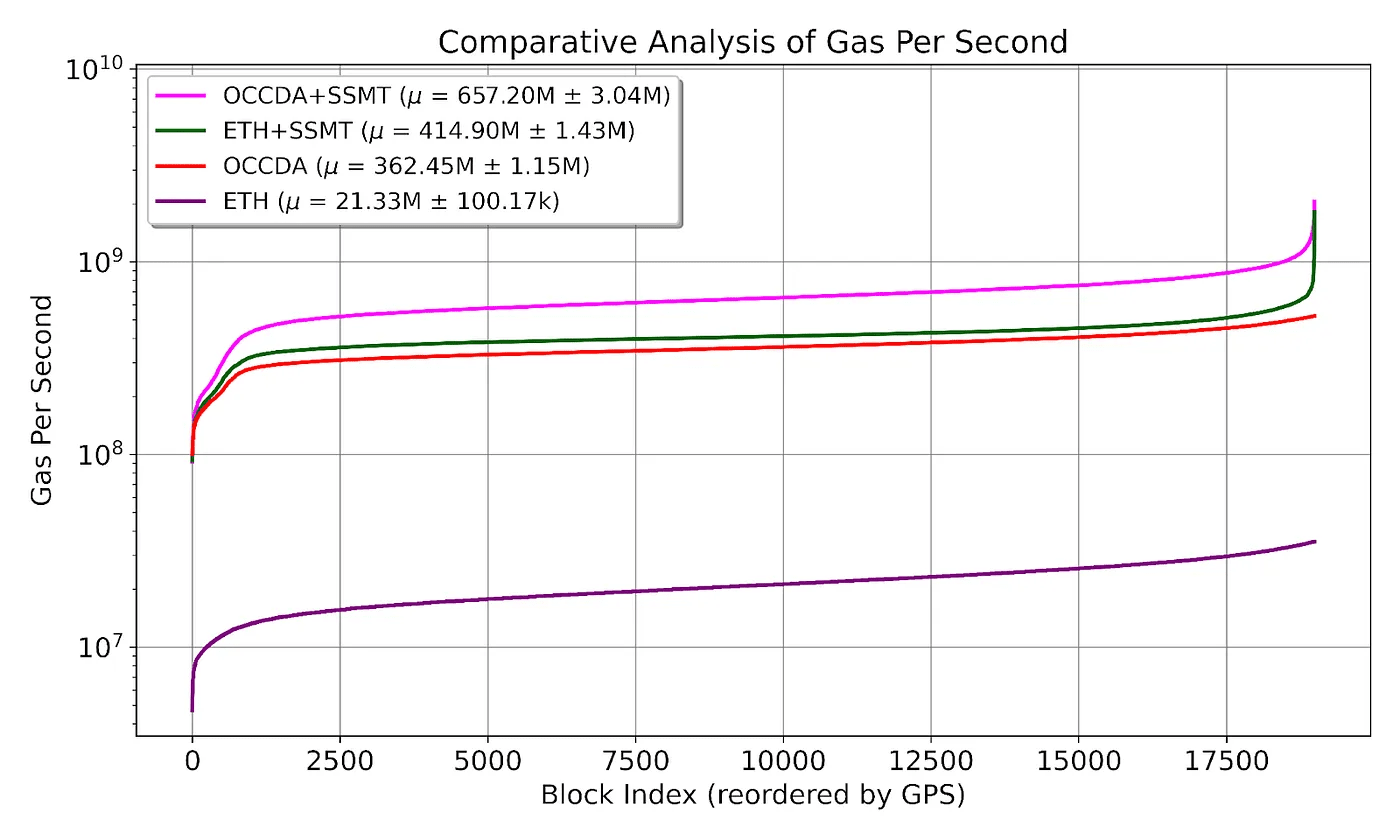
Combined with SSMT, the average TPS increases to ~6635, which is 1.6x the TPS offered by Deterministic OCC alone and 25x the regular TPS, based on Ethereum mainnet data.
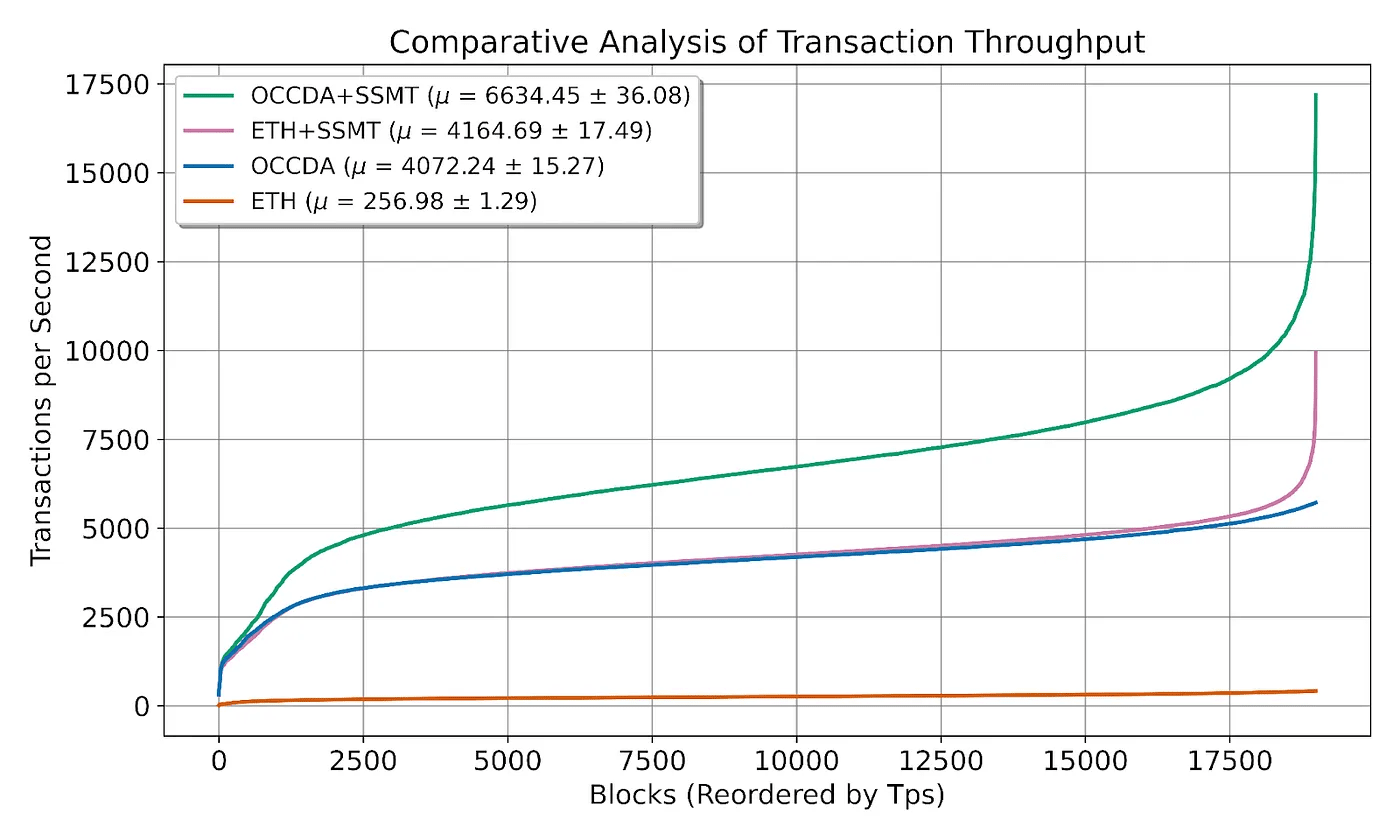
Parallel Scalable Storage uses distributed storage that prioritizes memory, unlike traditional disk-based blockchain systems. While other high-performance designs rely on expensive high-capacity servers, Altius achieves better efficiency through caching, sharding, and load balancing on standard hardware. Instead of centralized SSD-based storage causing I/O bottlenecks, our system distributes shards with in-memory caching for faster access.
More importantly, besides reducing hardware costs, Altius is visionary — it can be efficiently scaled with distributed storage, while other high-performance designs rely on single-machine storage that limits scalability as demand grows.
Conclusion
Parallel Scalable Storage represents a paradigm shift in blockchain state management. By combining sharded architecture, distributed caching, and optimized data structures like Scalable State Merkle Trie (SSMT), it addresses the limitations of traditional systems, offering unparalleled throughput, scalability, and cost efficiency. As blockchain networks evolve, the adoption of such advanced solutions will be essential to meet the demands of an ever-growing decentralized ecosystem.
Instruction-Level Parallelism
Traditional blockchain systems use sequential transaction execution, causing large-scale congestion due to the complete re-execution of transactions during conflicts.
Altius's Instruction-Level Parallelism (ILP) processes individual instructions concurrently, reducing conflicts and enhancing performance by identifying dependencies among granular instructions.
Core Principles of Instruction-Level Parallelism
Static Single Assignment (SSA) modifies smart contract bytecode to track instruction dependencies, enabling concurrent execution. Key principle:
Granular Execution: Processing independent instructions concurrently
Dependency Graph Analysis: Managing instruction relationships for optimal sequencing
Conflict Minimization: Reducing the need for re-execution through instruction-level tracking
Key ILP optimizations include:
SSA Transformation: Converting bytecode to efficiently track dependencies
Dynamic Scheduling: Parallel processing based on dependencies
Incremental Execution: Continuous progress despite conflicts
ILP improves throughput, reduces latency, and maximizes resource utilization while providing optimization tools for developers.
Evaluation and Benchmarking of SSA
SSA evaluation uses dependency graphs to identify instructions causing conflicts during execution. Performance is measured by comparing critical path lengths with initial gas consumption, to determine SSA efficiency gains.
Altius achieves a 75% reduction in gas costs through selective re-execution of instructions.
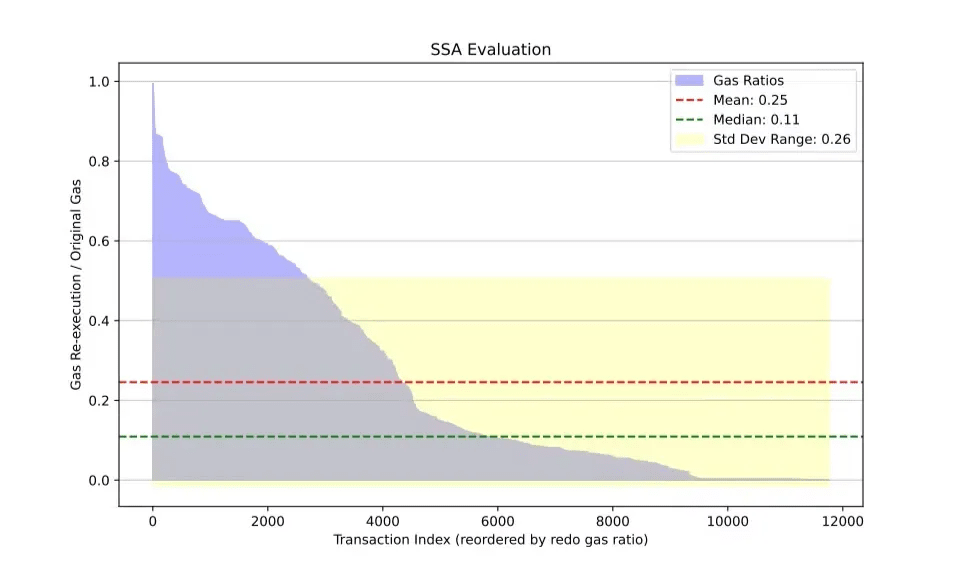
Conclusion
Instruction-Level Parallelism transforms blockchain execution through concurrent processing and increased efficiency. By employing advanced techniques like SSA and Deterministic OCC, ILP enhances transaction processing beyond sequential limitations. This innovation will help blockchain networks scale effectively, offering better performance and user experience.
Application Code Assessor
The Application Code Assessor module incentivizes developers to create smart contracts that maximize parallel execution potential.
Deterministic Optimistic Concurrency Control (OCC)
Altius's Deterministic OCC orders transactions by assuming parallel execution. When state conflicts occur, transactions are aborted and deterministically re-executed, identifying conflicts while maintaining gas efficiency for operations after the conflict point.
During conflicts, subsequent transactions are aborted and re-run from the conflict point. Multiple aborts waste gas and indicate reduced parallelism.
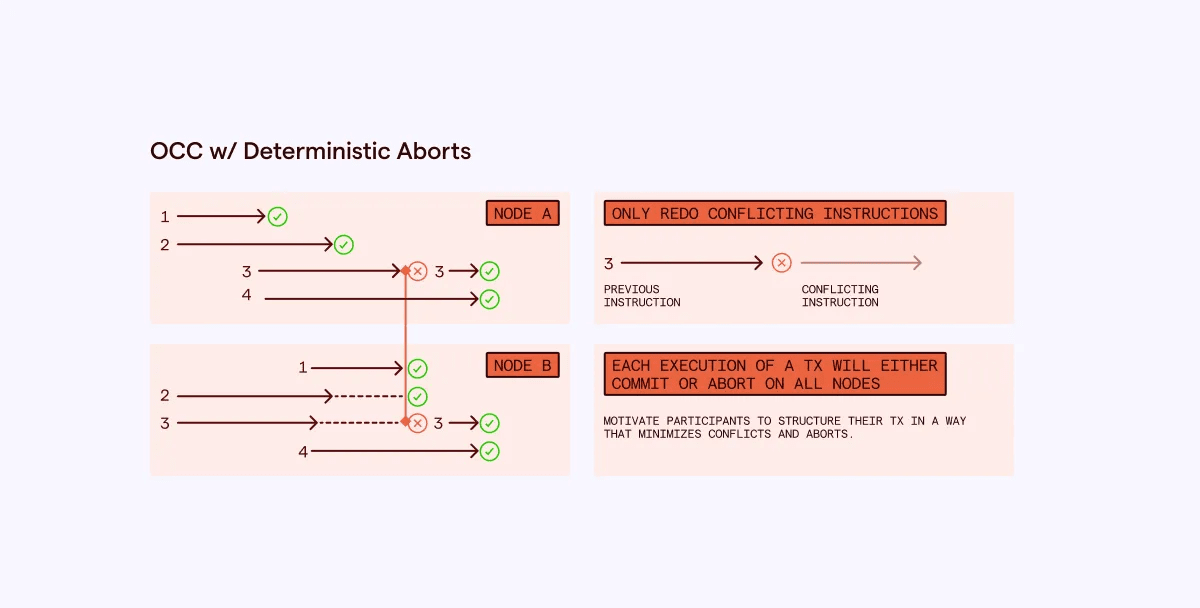
Evaluation Framework
Altius implements an evaluation framework to analyze the performance of smart contracts and encourage parallel execution. This framework measures transaction efficiency and rewards high parallelism.
The system periodically evaluates contracts, analyzing transaction dependencies and calculating efficient gas ratios.
The suitability of parallel execution for smart contracts is evaluated by:
Transaction Parallel Level: Higher throughput indicates better parallelism
Total Gas Amount: Higher gas consumption indicates better contract utilization
Contract data is collected at the end of the period for reward calculation.
Evaluation and Benchmarking of Deterministic OCC
We test the acceleration of Deterministic OCC, TPS, and GPS across thread counts using conflict-free data and Ethereum mainnet measurements.
The main contribution of Deterministic OCC is Altius's Application Code Assessor, which incentivizes reducing transaction conflicts for better performance.
Using a 32-thread server, non-conflicting transactions achieve speed increases of ~400x compared to sequential execution.
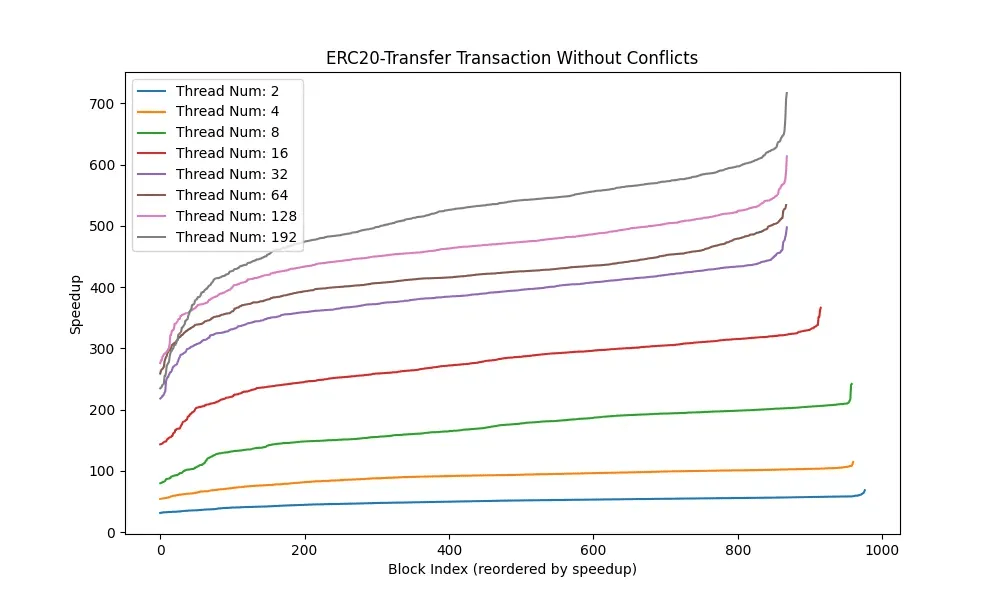
GPS significantly increases by adding the number of threads, reaching ~70 with a domestic 32-thread server based on non-conflicting transactions.
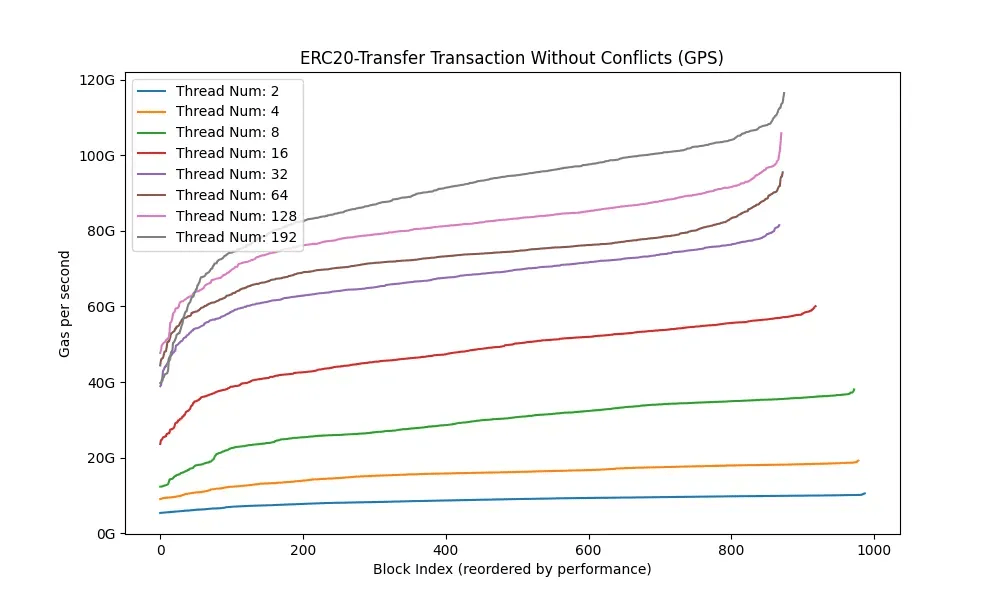
TPS significantly increases by adding the number of threads, reaching ~2 million with a domestic 32-thread server based on non-conflicting transactions.
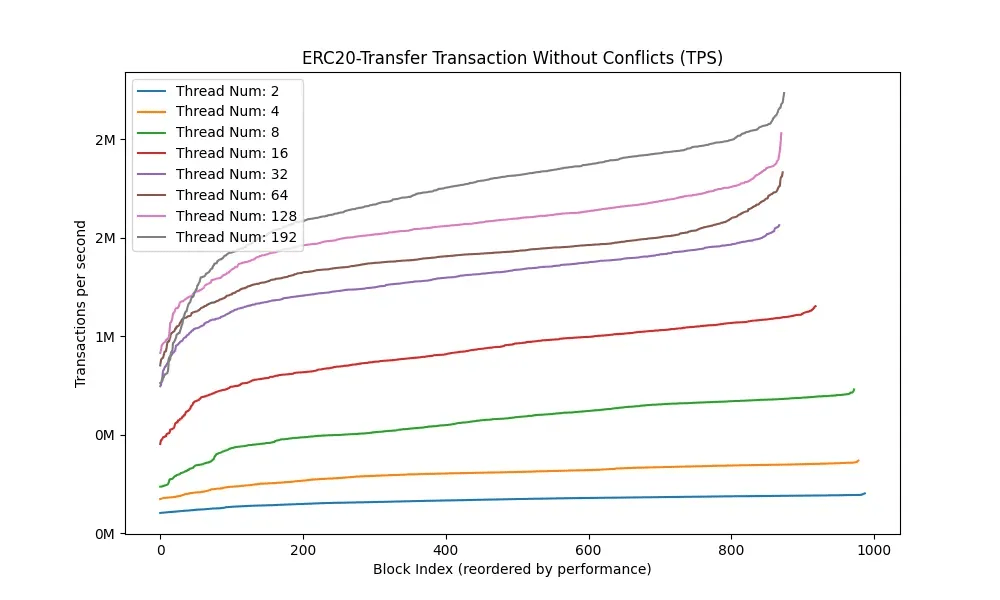
Deterministic OCC guarantees an average speed of ~7x based on Ethereum mainnet data.
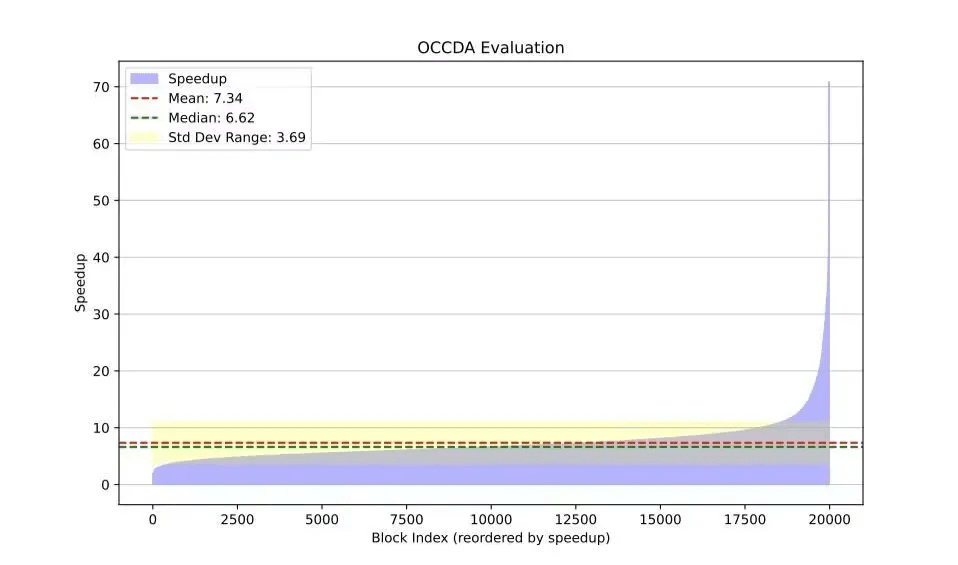
Deterministic OCC guarantees an average Gas-Per-Second (GPS) of ~374M, which is 16x regular GPS, based on Ethereum mainnet data.
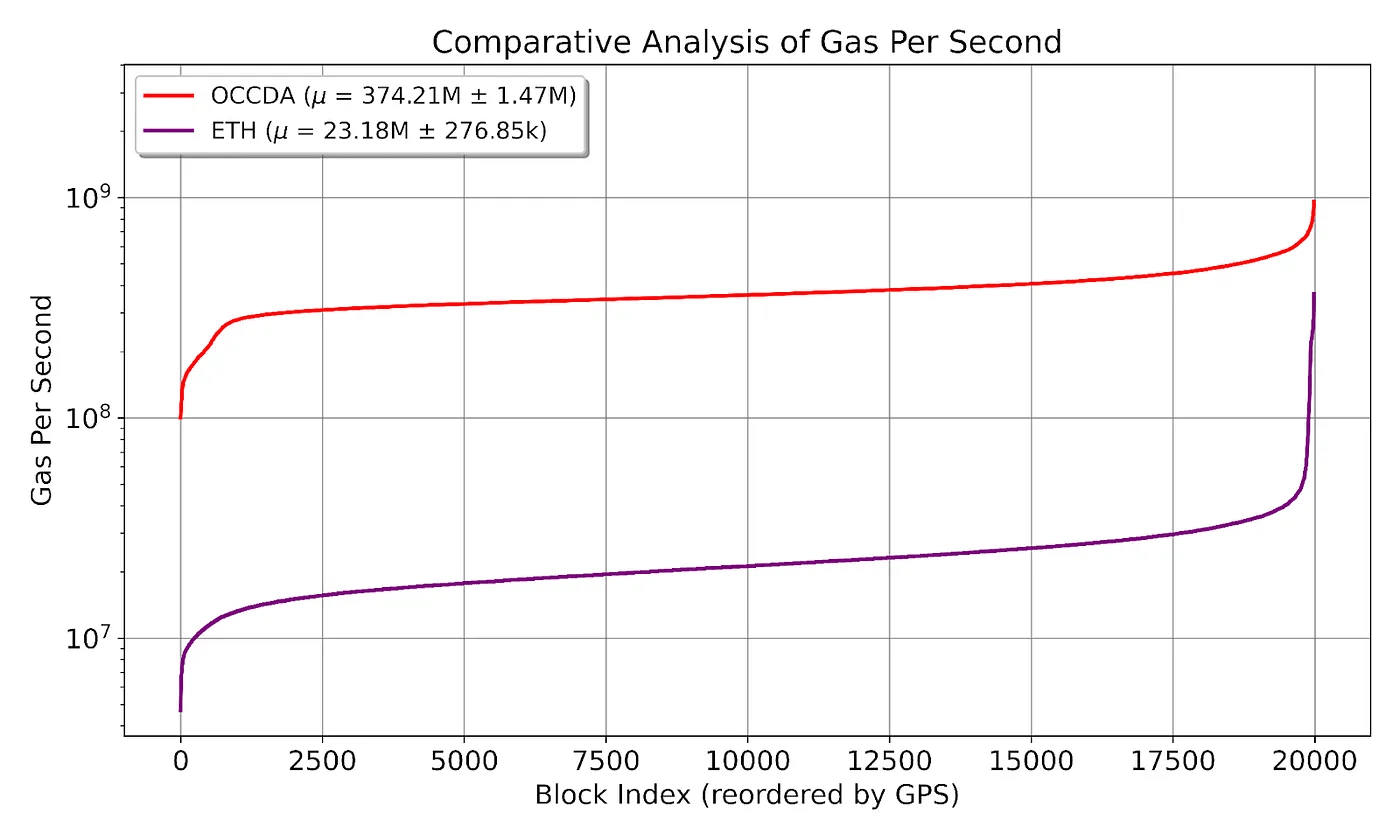
Deterministic OCC guarantees an average Transactions-Per-Second (TPS) of ~4190, which is 15x regular TPS, based on Ethereum mainnet data.
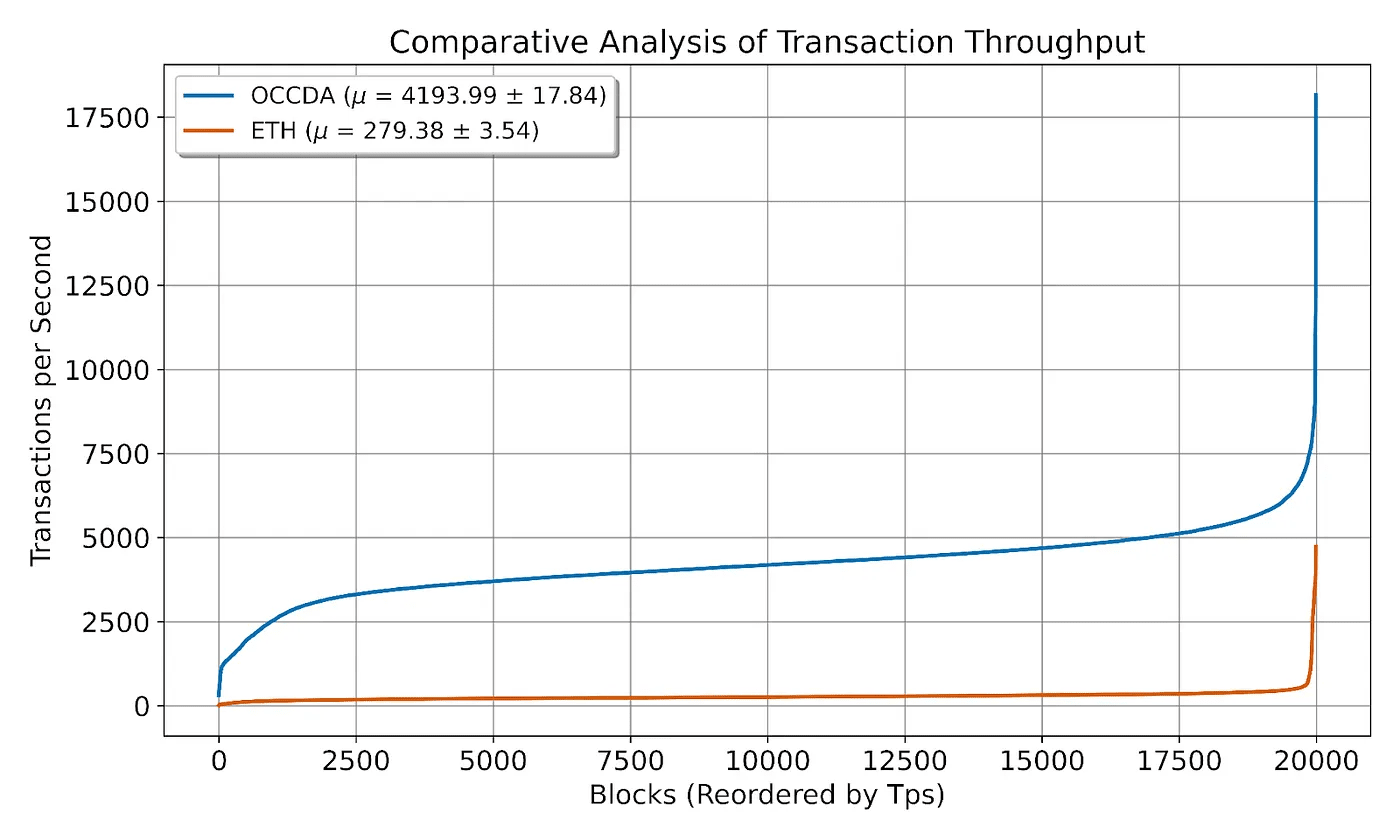
Conclusion
Application Code Assessor (ACA) is designed to further enhance overall execution performance by encouraging application developers to write more efficient code. ACA offers tools and protocol-level evaluations that help smart contract developers create applications optimized for multi-threaded parallel processing execution environments.
4. Implementation
Altius Stack is our VM-agnostic Modular Execution Framework implementation and leverages parallel execution and advanced state management to address core blockchain inefficiencies.
By separating execution from consensus and leveraging modular data availability layers, Altius Stack creates a more flexible and resilient blockchain architecture than traditional solutions like Cosmos SDK or Geth.
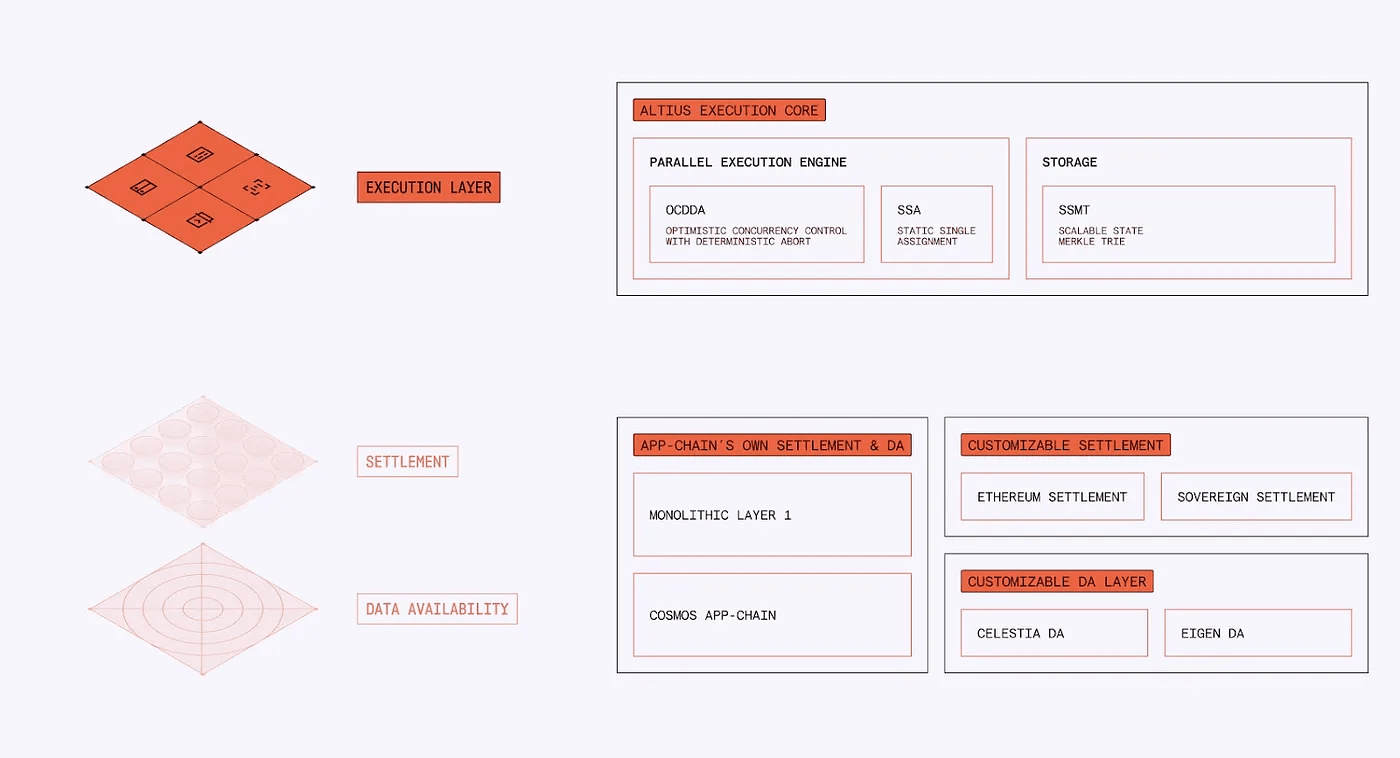
Altius Execution Core
Altius Execution Core supports Altius Stack through the Parallel Execution Engine and Scalable Data Cache, enabling fast transactions and state management in concurrent operations.
Parallel Execution Engine
Parallel Processing Engine is a core component of Altius Stack, enabling parallel transaction processing for higher throughput and lower latency. This engine utilizes modern hardware to efficiently handle increased workloads.
The engine has three main components:
Deterministic OCC (Optimistic Concurrency Control with Deterministic Aborts): Enables parallel transaction execution with consistent conflict resolution.
SSA (Static Single Assignment): Tracks instruction dependencies to minimize re-execution overhead.
SSMT (Scalable State Merkle Trie): Manages state data using a divided Merkle tree structure. Data is distributed across nodes based on key prefixes, with workload balancing for optimal performance.
Parallel Processing Capability for Layer 1 and Layer 2
Altius Stack enables parallel processing on L1 and L2 through lightweight modifications and customizable solutions.
L1 Integration
Altius Core integrates with L1 in two ways:
L1 Without Consensus and Execution Separation: L1 proposers produce executed blocks. Altius Core helps efficiently generate these blocks through parallel execution, eliminating performance bottlenecks. Example: Ethereum 1.0 and most older L1 designs.
L1 with Consensus and Execution Separation: Consensus layer proposers issue blocks that have not yet been executed, which are then processed by execution nodes. Altius Core enables parallel execution of these blocks for higher throughput. Example: Ethereum 2.0, some Cosmos-based chains like Berachain.
For separate architecture, Altius Core's deterministic parallel execution ensures consistent results across nodes, maintaining L1 distributed consistency.
L2 Integration
Customizable Resolution Layer: Choose between Ethereum Resolution, Sovereign Resolution, or custom options.
Customizable Data Availability Layer: Choose from existing data availability providers like Celestia DA, Eigen DA, or custom solutions.
5. Open Execution Network: Scalable and Permissionless Parallel Execution
Shared Execution System
Altius introduces a shared execution system designed to meet the growing demand for scalable and high-performance transaction processing across a diverse blockchain ecosystem. At the core of this system is the ability to provide parallel transaction execution to any chain—be it Layer 1 or Layer 2—with a pay-per-use basis. By offering execution as a service, Altius allows chains to offload transaction processing, thereby improving throughput and reducing costs. This initial phase will focus on providing robust and cost-effective execution services for chains looking to enhance their transaction processing capabilities.
Open Execution Network
While the shared execution model allows Altius to function as a centralized provider of parallel execution infrastructure, the transition to the Open Execution Network (OEN) marks a significant milestone in decentralizing execution and enabling seamless participation from any entity in the blockchain ecosystem.
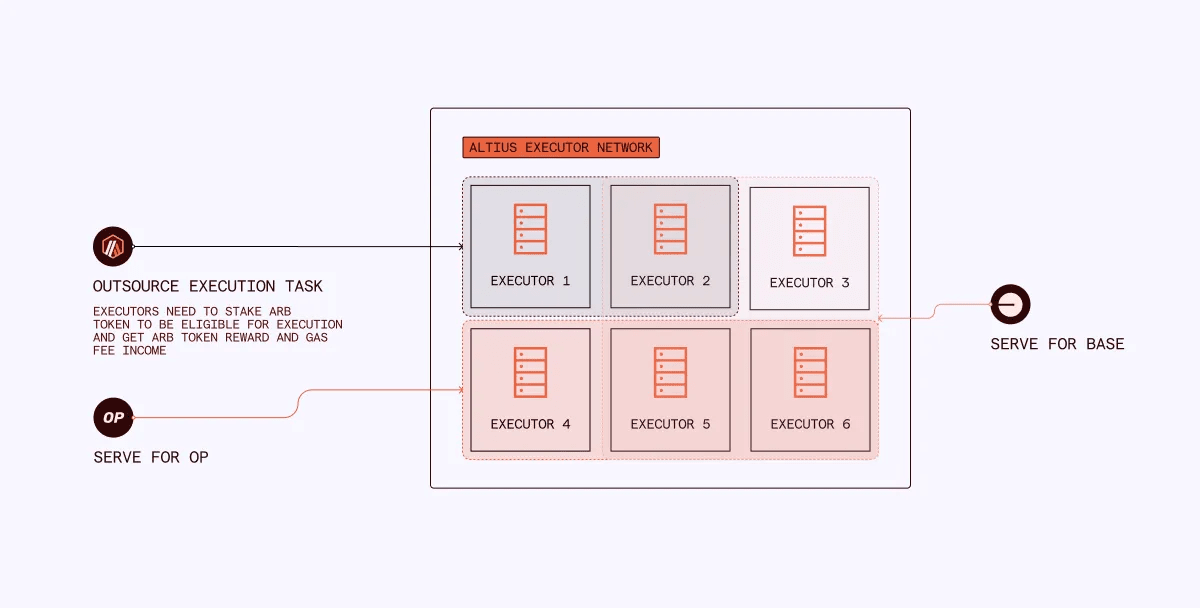
2025
Expand compatibility to multiple VMs by Q2 2025
Launch Shared Execution Layer in Q4 2025
Transition to Open Execution Network (OEN) in Q4 2026
Altius Stack
By separating execution from network design, Altius Stack enables seamless integration with L1, L2, and application-specific chains, enhancing interoperability across various blockchain solutions. This modular approach supports a range of VM environments, from EVM to MoveVM, CosmWasm, and others, further providing templates for developers to build optimized applications on any chain.
The flexibility of Altius Stack makes it compatible with both existing and newly developed chains, allowing for easy upgrades and configurations for the blockchain ecosystem.
Shared Execution Layer
Altius will horizontally integrate networks by leveraging Altius Stack into the Shared Execution Layer, providing an execution infrastructure that enhances parallel processing across multiple chains. This solution will offer optimized execution resources through dynamic load balancing, allowing developers to increase scalability and reduce latency for decentralized applications (dApps) and smart contracts. The Shared Execution Layer will serve as a foundation for broader use cases, facilitating cross-chain operations with improved throughput and efficiency.
Further Decentralization with Open Executor Network
Altius plans to transition to a fully decentralized execution model with the Open Execution Network (OEN). This shift will allow any participant, whether chain, application, or decentralized entity, to contribute computing resources and execute transactions across blockchains. Executors will stake Altius tokens and native tokens from the chains they serve, aligning incentives and ensuring network reliability. This transition will eliminate centralized points of failure and create a permissionless, resilient, and scalable execution ecosystem, enhancing cross-chain interoperability and supporting the future of multi-chain blockchain technology.
7. Conclusion
Altius creates a high-performance execution layer that is VM-independent and compatible with any chain for future-proof blockchain infrastructure. Altius aims to set a new standard for blockchain scalability while enabling seamless cross-chain connectivity. With Altius, the blockchain ecosystem will have continuous access to cutting-edge execution performance, allowing them to focus on building what matters.
Altius Execution Core combines SSMT, SSA, and Deterministic OCC technologies to process transactions in parallel and support multiple virtual machines. Its modular design enhances system resilience while reducing centralization. Altius also introduces a new reward model to further enhance execution performance by incentivizing application developers to write smart contracts optimized for parallel execution environments.
This architecture aims to unlock future scalability and interoperability in a multi-chain world. Altius is more than just an infrastructure provider — it lays the foundation for a future where blockchains operate at Web2 efficiency while maintaining decentralization principles.
Indonesian:
References
RainBlock: Faster Transaction Processing on Public Blockchain: https://www.usenix.org/conference/atc21/presentation/ponnapalli
Leveraging Parallelism in Smart Contracts on Decentralized Blockchain by Taming Application-Inherent Conflicts: https://arxiv.org/pdf/2201.03749
Decentralized Blockchain with High Throughput and Fast Confirmation: https://www.usenix.org/system/files/atc20-li-chenxing.pdf
Operation-Level Concurrent Transaction Execution for Blockchain: https://arxiv.org/pdf/2211.07911
Glossary
Static Single Assignment (SSA): A compiler optimization technique that ensures each variable is assigned only once. In Altius, SSA enables Instruction-Level Parallelism (ILP) by tracking dependencies and reducing excessive re-execution.
Deterministic Optimistic Concurrency Control (Deterministic OCC): A parallel execution model where transactions initially assume no conflicts. If conflicts arise, affected transactions are deterministically aborted and selectively re-executed, minimizing gas waste and maximizing throughput.
Scalable State Merkle Trie (SSMT): A distributed state storage structure that partitions data across nodes using divided prefixes. SSMT enhances query efficiency, load balancing, and state synchronization, significantly reducing I/O overhead and improving execution speed.
Are you interested in learning more about Altius? Follow its social media:
— X: @AltiusLabs
— Telegram: t.me/altiuslabs
— Discord: discord.gg/altiuslabs